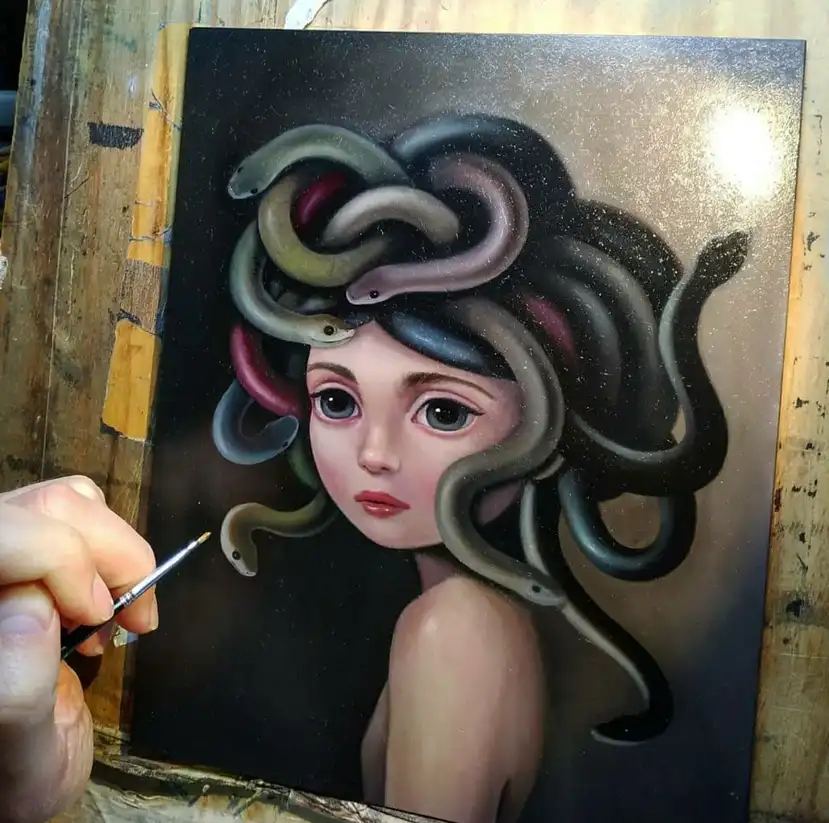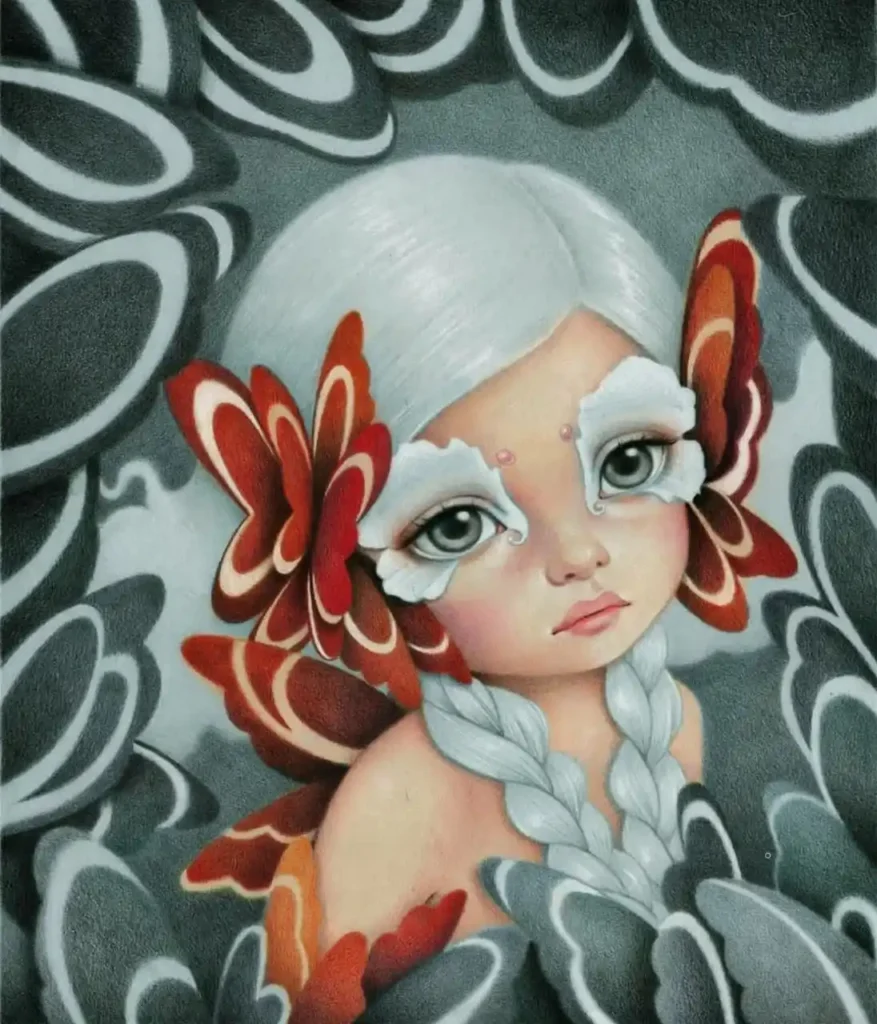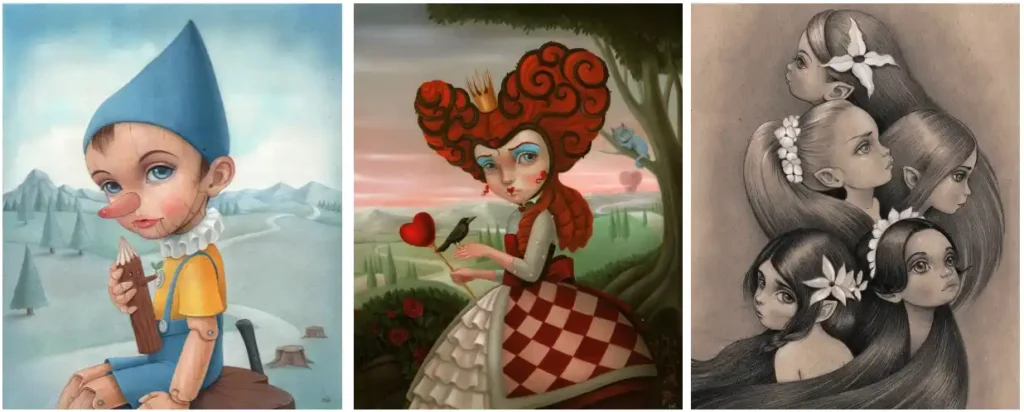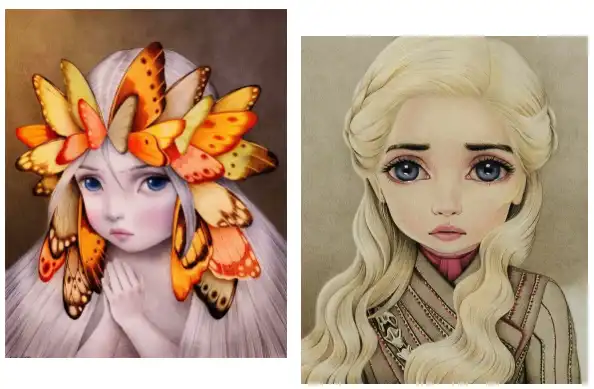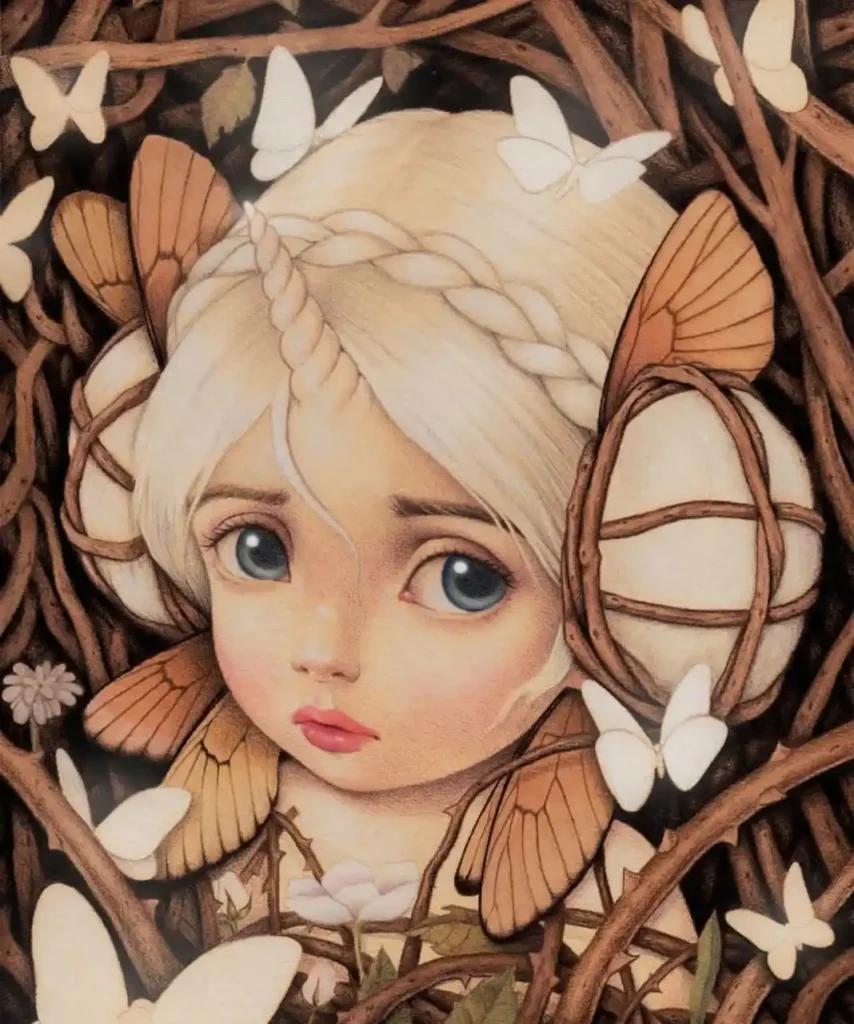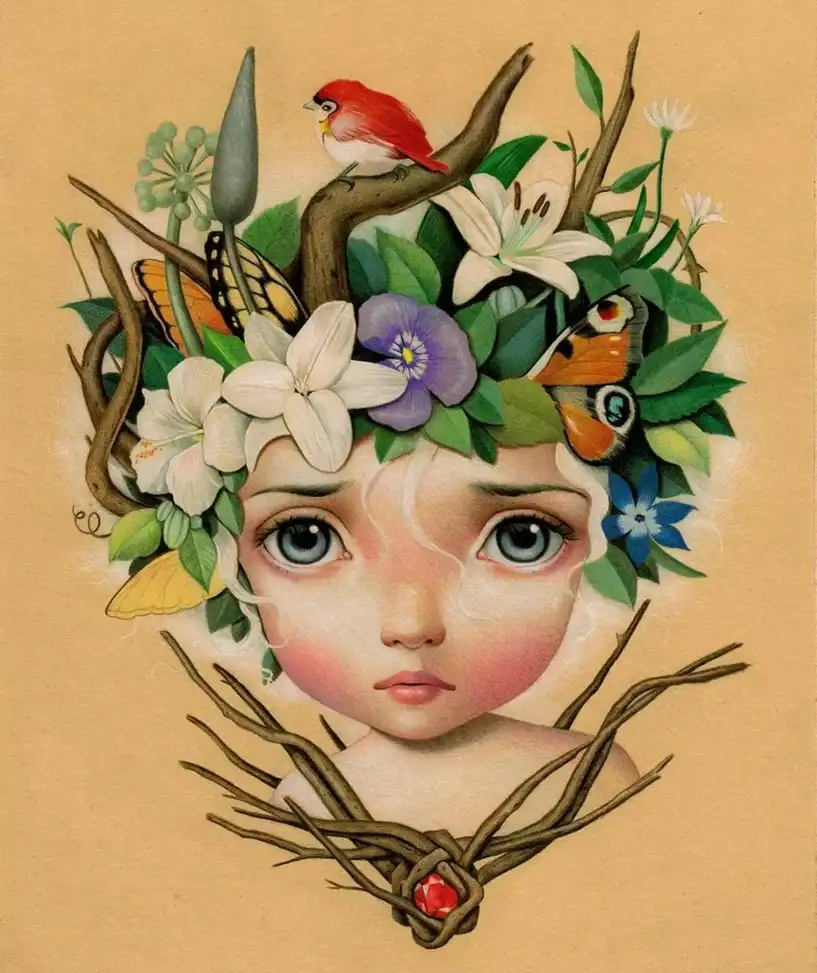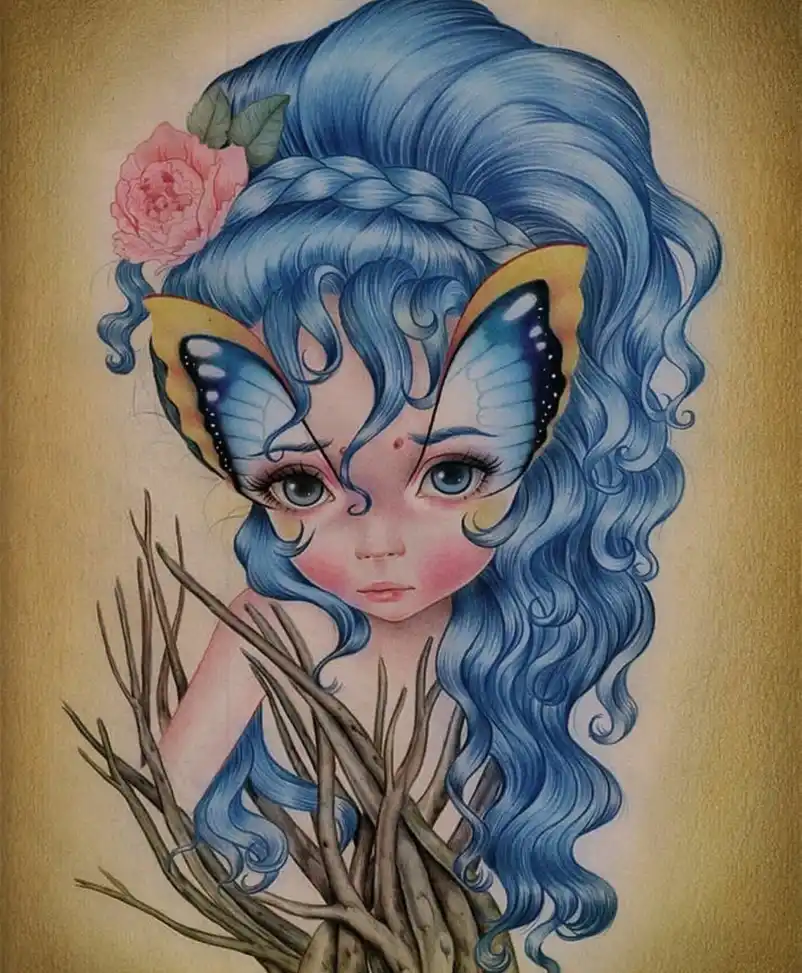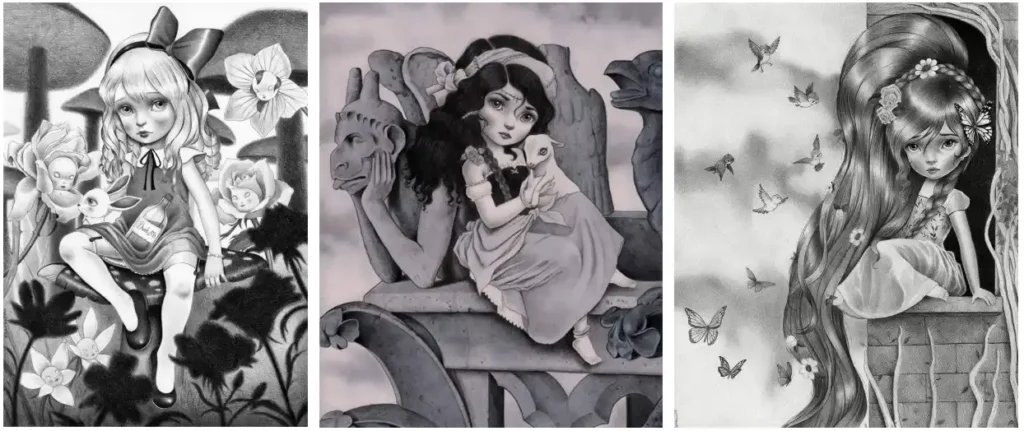Raul creates his work in a highly recognizable manner. His characters are amazing and beautiful, each has its own story. His child characters are full of innocence, purity of childhood, inner beauty and light. Their eyes are a real mirror of the soul.However, his works not only amaze with the perfection of the lines, but also remind everyone of a very important connection – the connection with their inner child.About paintings, exhibitions, education and difficulties in the profession of an artist… We will talk about all this in our interview today.
I’d like to think that we can live a life where a combination of these three concepts is possible. Certainly, for me, it is a way of life, BUT it is also my profession. I spent years at the University of Granada (Spain) preparing myself for being a professional. At the end of the day a hobby is something that you do for the pure pleasure of doing it, because there is a certain amount of joy and delight while doing that thing. So yes, being an artist is a beautiful cocktail of these three concepts.
I put a lot of myself into this show. Every time I create a new series of artworks for a show, I try to find a driving force, a guiding theme that helps me to give the collection a cohesive look. While this theme is mostly a universal truth in most of my shows, such as beauty, innocence, the world of nature, etc., on this last show I focused on my fears and hopes. My personal prayer for a better future. H O P E was in some way a prayer, yes. I don’t choose names for my show. I wait for them to appear suddenly. While walking, talking to a friend, painting…they just come out when the time is near. I don’t make any effort. I prefer that they come naturally, without much thought.
My answer will be related to the previous questions. Children represent for me our HOPE. The desire for a better world. Childhood encapsulates beauty, innocence, naivety, purity… Then, when we grow up, we encounter fear, discrimination, and all the shadows and dark places that the human experience shows us. The children that I create are often aware of these places. They mostly know what’s outside of their room. The dangers, but also the wonders of this land. I wouldn’t use the word “sad” to describe them. I do realize that there is something like a melancholic look in this. A certain “nostalgia”. Perhaps for a better world? For the loss of innocence? Surely this is not something for me to answer, but for the ones who experience my work. Each viewer has a unique experience when encountering art, based on aesthetic aspects or personal experience. Certainly, if you can note the sadness in my work, it is because you are familiar with it and you are able to identify the aspect of it.
The recognizable appearance they have today has been a very long process throughout the years. I’m refining shapes, lines, proportions, looking for the closest result to what lives in my mind. But this is a never-ending task. These characters keep evolving as I live and experience this world. Most of the time I depart from universal concepts and ideas, such as beauty, innocence, naivety, sacredness, etc. Then I look for symbolic elements, shapes and colors to unify the idea; these are the aesthetic aspects. The technical process always involves the same procedure: finding the right paper, creating the concept, sketching and drawing, and finally painting. There is always room for improvement and also for mistakes. Mistakes are an essential part of what I do. I’m learning to coexist with them.
I prefer not to pay much attention to general opinions. I believe in the power of the conscious creative process. I decide what I want to say, how I want to say it and when is the right time to leave the message free and out in the world. Technique is definitely an important element of the equation but as I get older, I tend to pay less and less attention to my technique and focus more on what I want to say and how I communicate with the other side. I feel that I’m in a constant process of experimentation. I need to keep my curiosity in a vibrant state, looking for new means and ways to express these ideas.
As much as I can, I try to explore and get out of my comfort zone. But it’s not always easy. Sometimes you just need to stop, go for a walk, stay silent and do nothing. Silence and solitude are always the best food for my soul. I need my mind in the right place, if I’m going to create something. I visit museums and always observe how other artists approach the same universal ideas. As I work as an art teacher, I spend many hours correcting my students, so I’m very attentive to mistakes and how to fix them. I’m in a constant process of training and learning. Other than that, a beautiful way to hone your skills is to try new techniques and materials, that always sums.
For me it is all about benefits. My classical education helps me to approach and conceptualize my ideas in a better way. It allows me to understand and comprehend what’s behind the aesthetic aspects of every artwork that I love. Preparation is an essential part of my work: choosing the right paper, the right technique, colors, etc. While many artists have a natural sense and intuition in this matter, I know there is a huge difference between intuition and knowledge. Being an art teacher requires me to understand the orthodox part of art, so I’m then able to explain and transmit that knowledge to my students and to my personal work. So, yes. Talent is important. But education is essential. What would be interesting is how we focus education in art, how we translate feelings, emotions and understanding without losing the flame. As vivid and organic as art is, it requires constant evaluation from us.
The world of dreams seems so appealing, but I feel I’ve been in its realm too long. Today I prefer to play my cards exactly where I am. Of course, I have a lot of projects and goals, but sometimes too many ideas for the future prevent me from focusing on the present. My goal at the moment is to continue to enjoy what I do. No fixed plans or any place to arrive. This journey is an exciting experience for me.
mmmm… I’m not sure how to respond to this question in a few lines. It would demand a little more precise definition of what is considered an artist, what defines the role and also the importance of being a creative person in a society where a holistic education is not the model. The difficult thing about being an artist comes from the outside. I give art classes to many young creative adolescents who are very worried about finding their own “style”, their own voice, an online presence, and a legion of followers. While all these things have a relative importance, they are also imposed by the actual system that prioritizes immediacy and effectiveness versus knowledge and meaning. There is no difficult thing about being an artist. There are mistaken concepts.
